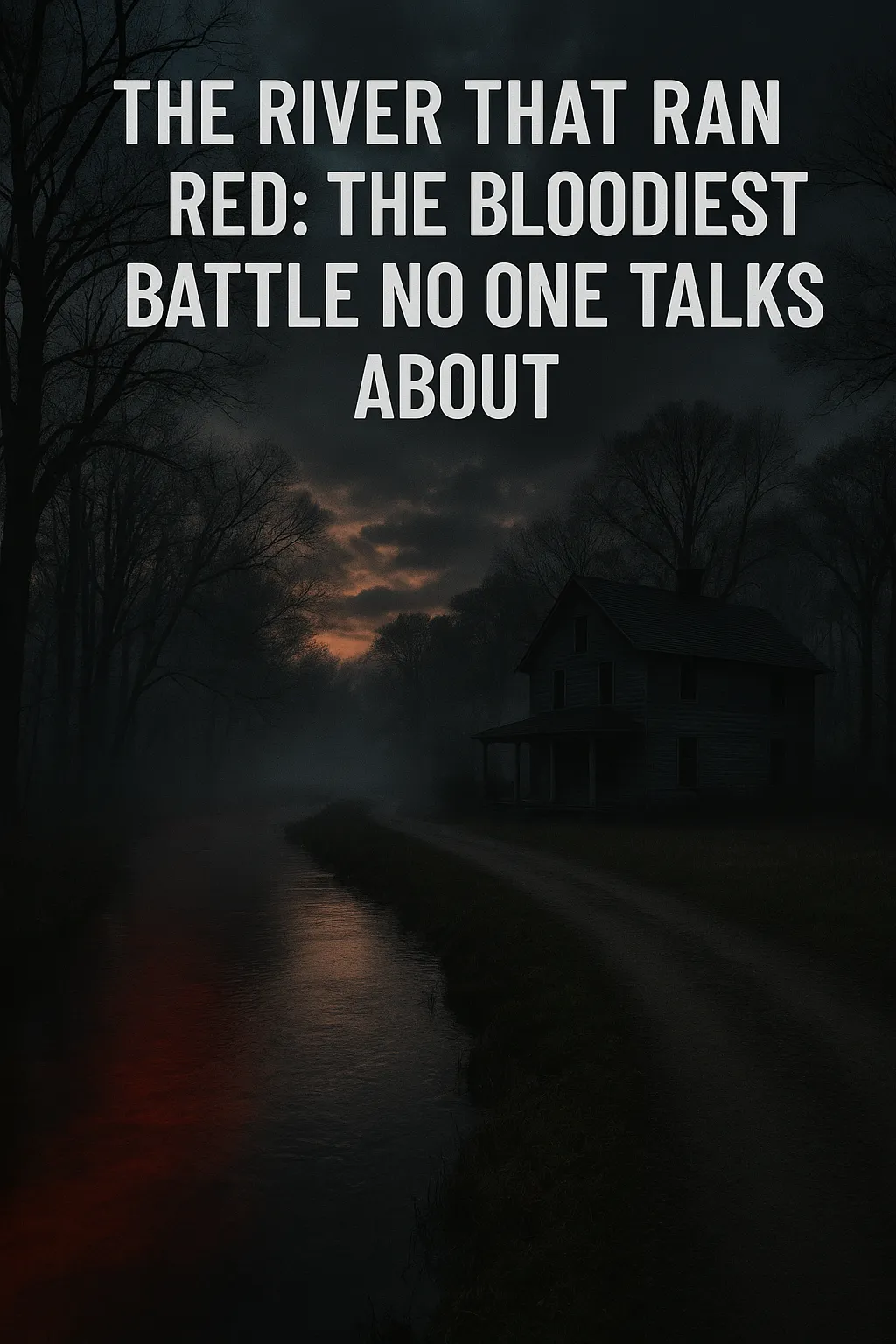
The River That Ran Red: The Bloodiest Battle No One Talks About
The River That Ran Red: The Bloodiest Battle No One Talks About
A Forgotten River. A Forgotten War.
Somewhere in the quiet woods between Chattanooga Valley and the Tennessee River lies a battlefield time has nearly erased. No monuments. No plaques. Just whispered legends—and a river once said to have flowed red for three days.
Locals call it "The Battle That History Forgot." But what if forgetting was the point?
Why Chattanooga Valley Is a Magnet for the Strange and Grim
Chattanooga Valley isn’t just beautiful—it’s bizarre. Civil War battlegrounds litter the landscape, but it’s what doesn’t appear in textbooks that draws the attention of ghost hunters and conspiracy theorists.
From haunted tunnels to phantom soldiers seen near Lookout Mountain, this land is soaked in both history and mystery.
And then there’s the river—the one that ran red.
The Legend of the Hidden Battle
In the fall of 1863, shortly after the Battle of Chickamauga, Union scouts reported a Confederate supply cache hidden deep in a remote valley near the Georgia-Tennessee border. What followed, according to oral history and scattered journal entries, was a brutal skirmish involving hundreds of men from both sides.
Here’s the twist: there’s no official record of this battle.
And yet:
Farmers reported finding dozens of unmarked graves well into the 1920s.
Children swimming in the nearby creek said they “tasted iron” in the water.
One early 1900s preacher called the area "cursed by a massacre forgotten by God and man."
Strange Sightings and Haunting Sounds
Ask around, and you’ll hear tales from hikers and hunters who’ve stumbled into the ravine near Dry Creek:
Distant gunshots echoing with no one nearby.
Screams in the mist.
Apparitions of soldiers with hollow eyes, standing at attention on moonlit nights.
Paranormal investigators have picked up anomalous heat signatures in winter and recorded disembodied voices that seem to cry, “Don’t leave us.”
Was This an Official Cover-Up?
Some theorists believe the U.S. Army buried the event, possibly due to friendly fire or a battle gone horribly wrong. With war fatigue setting in, the government may have decided to erase it from the books.
One now-lost letter from a Confederate widow mentioned that her husband died in a battle “so terrible, they swore us to silence.”
Top 5 Creepiest Things About the Red River Ravine
No birds sing there – even in spring, the woods remain eerily silent.
The water turns pink during heavy rains, which some say is due to “minerals”—others aren’t so sure.
Time slips – Hikers report losing hours near the ravine.
Unmarked graves regularly get uncovered by tree roots and floods.
Cell phones and cameras glitch out, but only within a 300-foot radius of the site.
Local Reaction: Fear, Folklore, and Denial
While some embrace the legend, many older locals don’t talk about it. A few even become visibly agitated when asked.
“I won’t go near that place,” said one longtime resident. “Something’s wrong with the soil. Wrong with the air.”
The property, rumored to be privately owned now, is nearly impossible to access—another clue that someone, somewhere, wants it left alone.
Chattanooga Valley’s Other Forgotten Horrors
This isn’t the only dark tale buried in the hills. Nearby, Hales Bar Dam has its own legends. There are also the stories of cursed Native American burial sites, strange lights in the woods, and entire families disappearing in the 1800s.
So what makes the Red River Ravine stand out?
Blood. Lots of it. And no answers.
Conclusion: Some Stories Refuse to Die
The tale of the river that ran red may never get a historical marker—but it lives on in whispers, in ghost hunts, and in the memories of those brave enough to walk its banks.
Just don’t go alone. And if you hear the sound of marching boots behind you?
Don’t turn around.
Want more haunted and hidden Tennessee history? Subscribe to our newsletter for monthly tales of Southern chills, forgotten crimes, and spine-tingling legends.
